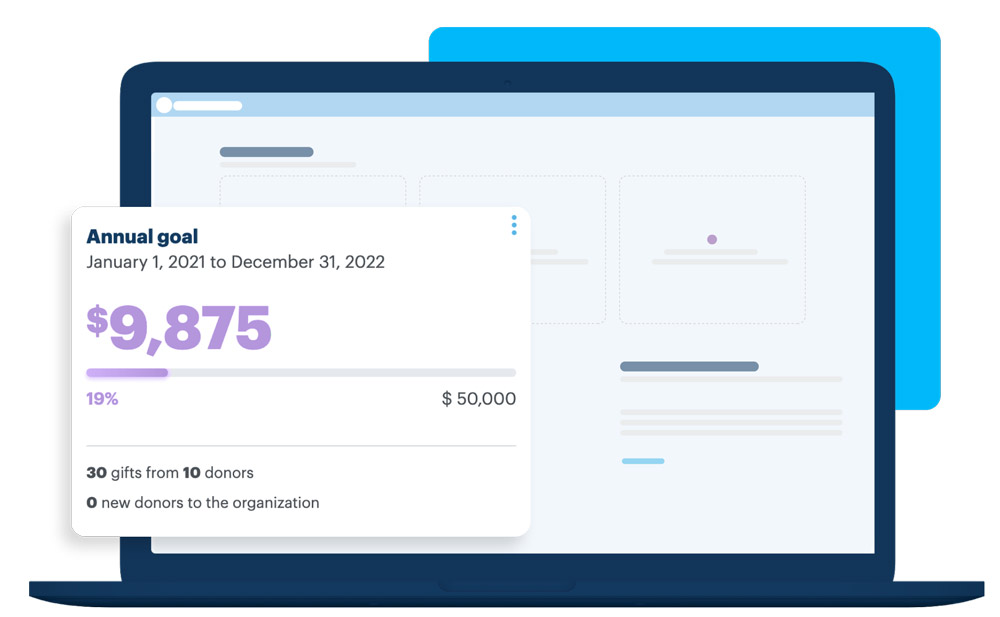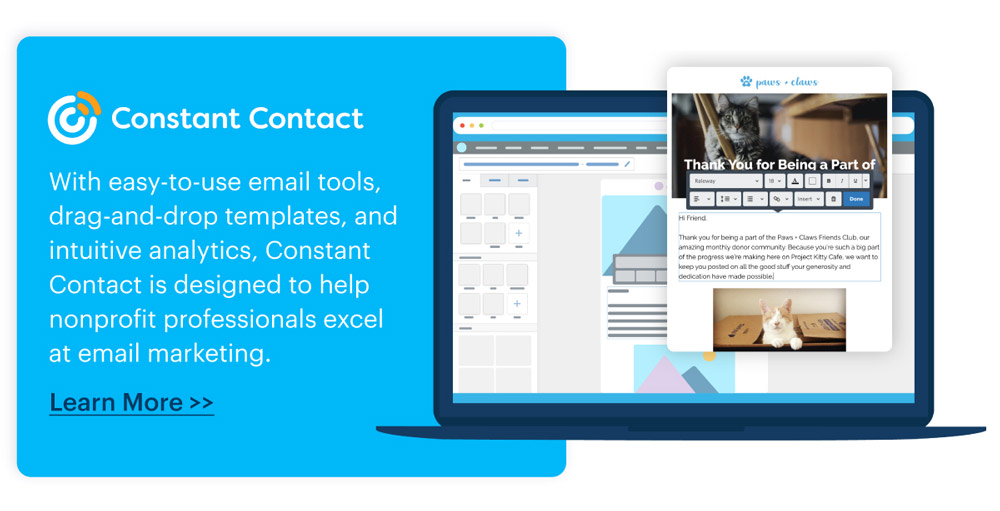April 1, 2022 | Fundraising Operations,
Nonprofit Trends
How to reframe nonprofit overhead as investments in your mission
“As a result of our collaboration and learning, we are convinced that today we have a problem in the way we fund nonprofits.”
-Presidents and staff of the Ford, Hewlett, MacArthur, Open Society, and Packard Foundations in a letter to peer philanthropists
Many donors, grantmaking organizations, and people who are passionate about the causes that nonprofits champion often scrutinize “indirect costs” and “overhead,” including staff salaries and benefits, vital infrastructure, equipment, professional development, utilities, and other costs that are necessary for nonprofits to function but don’t obviously support their beneficiaries.
In 2019, the presidents of the Ford, Hewlett, MacArthur, Open Society, and Packard Foundations began a collaborative effort to empirically develop best practices to combat the “nonprofit starvation cycle.”
They discovered that while foundations are key partners in supporting costs for programs and specific projects, their grantees face an average deficit of 17% for associated indirect costs with each grant. This deficit is largely due to limits on indirect cost reimbursement enforced by grantmaking organizations, and the general public’s misconceptions about overhead spending and what it takes to run a successful nonprofit. Smaller and newer nonprofits bear the brunt of these misconceptions, and often vastly underspend on the vital infrastructure they need to support their programs, unfortunately at the expense of their mission and the wellbeing of their staff.
The good news: foundation thought leaders are working to end the nonprofit starvation cycle, and you can join in the effort.
What overhead is … and what it isn’t
“Overhead” or “indirect costs” generally refer to a nonprofit’s administrative, fixed, and general costs. This can include things like fundraising expenses, staff salaries and benefits, office supplies, rent, utilities, marketing and advertising, and anything required to carry out a nonprofit’s mission beyond direct costs for specific programs and projects.
A popular misconception is that overhead is wasteful, and any spending that doesn’t directly support your nonprofit’s mission ought to be cut or minimized. The truth: spending that helps you and your staff thrive does support your nonprofit’s mission! Your beneficiaries need and deserve to receive services from staff with up-to-date training and relevant licenses. Your volunteers need and deserve adequate tools, technology, and resources so they can truly support your mission rather than become a time-suck with good intentions. And finally, though perhaps most importantly, you and your staff need and deserve the pay, benefits, and working environment required, not just to survive, but to thrive. If you’re hanging on by a thread, how can you be expected to get out of bed every day and tackle society’s toughest challenges on a shoestring budget?

The true cost of burnout and “making do” with the bare minimum
According to Exact Hire, the voluntary annual turnover rate for nonprofit organizations is 19% – far exceeding the all-industry average of 12%. In a 2021 study, Nonprofit HR found that 45% of nonprofit employees plan to seek new jobs by 2025. Of that group, 23% said that they will not seek future employment in the nonprofit sector.
It’s estimated that turnover costs 33% of an employee’s annual salary. This includes expenses associated with posting a position, screening and interviewing candidates, onboarding, background checks, and lost productivity.
This data, though alarming, can inform sound strategy. Investing in employee retention and satisfaction will pay for itself whenever a staff member decides to stay with your nonprofit rather than seek employment elsewhere. Survey, interview, or even have casual conversations with your team to check in on how they’re feeling and what improvements they would like to see. There may be creative, low-or-no cost solutions you can implement right now to keep your nonprofit’s staff engaged and satisfied in their work lives.
It’s one thing to understand the value of an internal investment, and an entirely different thing to actually implement them – especially when you have limited resources. Here are some tips to get started, and we invite you to share your ideas in the comments below.
Creating a positive culture around internal investments
- Interview board members and skeptical donors, or any stakeholders who aren’t totally sure about increasing overhead spending. Speak their language, hear them out, actively listen, and address any specific worries. Some may be concerned that “overhead” directly translates to “slush fund” or “executive director’s tax-free party yacht.” Gently assuring them this isn’t the case may be all they need!
- Run an annual, honest audit of areas where you can confidently DIY or cost save, and areas that require more resources. Are the tools you’re using up to the task, or do you just use them because they’re cheap or free? By taking full advantage of skilled volunteers, free online resources, and discounted services area businesses may offer to nonprofits, you’ll be able to reallocate your budget to where it’s most needed. This helps your stakeholders know that your nonprofit is using its resources wisely. Plus, your volunteers will feel more connected to your mission, making them even more likely to become donors, too!
- Avoid sharing your overhead rate as a pride point – this feeds into the idea that overhead and indirect costs are inherently bad and must be kept to a minimum. Instead, share your impact on your community and the ways in which you make a tangible difference for others. Regardless of how your nonprofit allocates its budget, your impact is the most important thing.

Staff retention, pay, and working conditions
- Never forget that you and your staff are professionals – you’re experts in what you do, you are passionate about making a positive difference, and you deserve to live decent lives while doing good for your community.
- Confirm that your pay rates are fair and up-to-date. Cost of living and inflation have increased substantially in recent years. Whenever you’re posting a position, run them through inflation and cost of living calculators.
- Compare salaries and benefits across sectors when creating new roles. Do you think you can attract and retain decent talent with what you’re offering? If not, why not?
- Brainstorm solutions that save on costs, but benefit your staff. Some examples include: increased or unlimited PTO, accommodations for family needs, flexible scheduling, health care stipends if a group plan is too costly, and cost sharing for public transportation or other local amenities.
- Determine if remote and flexible work arrangements can deliver saving opportunities. How much space does your team truly need to carry out your mission? If part or all of your team can work remotely, can you downsize? Are there any local nonprofits you can partner with to share space? Sharing fixed costs with a related nonprofit could even lead to collaborative opportunities in the future.
- Focus fundraising efforts on unrestricted and general funds. Use mail merges and mass appeals to streamline these efforts.
- Develop an elevator pitch for your general fund. Unrestricted funds are nimble, and in an era when we’ve learned to anticipate massive, global challenges at a moment’s notice, your nonprofit needs the freedom and flexibility to allocate its resources exactly where they’re needed.
- Show your supporters how they’re contributing to a happy, vibrant, and effective organizational culture. Rather than hide or minimize your investments in your team, try highlighting them on your nonprofit’s website to show your supporters that they’re making a difference in more ways than one. You could provide opportunities for your donors to connect with your team through staff profiles, or a blurb about how prioritizing living wages and adequate tools is critical for your team to succeed. This will have an added bonus of making your nonprofit particularly attractive to top-tier job seekers.
- Celebrate staff training and professional development as part of your impact. If you were able to attend a conference and learned new strategies that worked well with your beneficiaries, share it with your board!
- Build relationships with foundations, individuals, and businesses. If a grantmaking organization or donor requires specific, low limits on overhead spending, don’t apply. Focus your efforts on developing rapport with foundations, individuals, and area businesses who won’t ask that you spend the bare minimum on yourself.
- Strategically segment mass appeals and communications to only target audiences you believe will be receptive to your message. You’ll save on printing costs while raising more money – double win!

Know your worth, and let your light shine!
“Be grateful for what you have, AND demand what you deserve.”
–Abby Wambach, retired US National Women’s Soccer captain and six-time winner of the U.S. Soccer Athlete of the Year award
For so many, a career in the nonprofit sector is less of a job and more of a calling, and that’s a beautiful thing! You have an incredible drive to help others and make the world a better place. That doesn’t mean you have to forgo the tools and resources you need to thrive, both personally and professionally. Thankfully, funders are learning that nonprofits need smart internal investments to succeed.
Meet the author: Emily Zacek
Emily Zacek is a copywriter, fundraiser, and nonprofit advocate. She brings a decade of professional fundraising experience, including specializations in grateful patient work, annual giving, stewardship, events, community engagement,...
Learn more about Emily Zacek




Follow us on social!